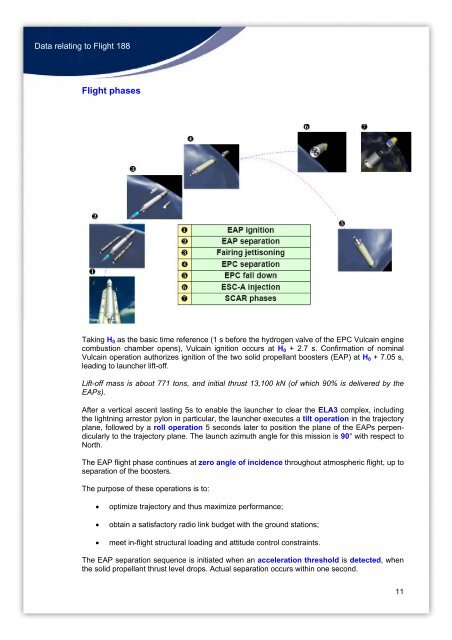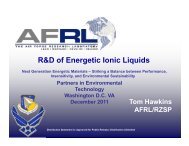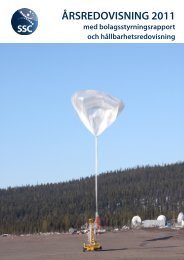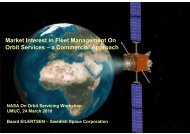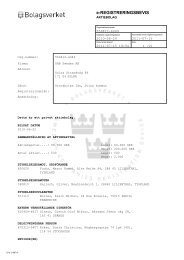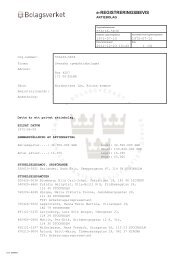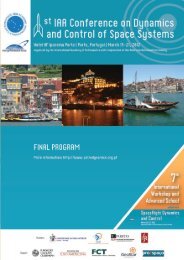Flight 188 - uppsagd
Flight 188 - uppsagd
Flight 188 - uppsagd
Create successful ePaper yourself
Turn your PDF publications into a flip-book with our unique Google optimized e-Paper software.
Data relating to <strong>Flight</strong> <strong>188</strong><strong>Flight</strong> phasesTaking H 0 as the basic time reference (1 s before the hydrogen valve of the EPC Vulcain enginecombustion chamber opens), Vulcain ignition occurs at H 0 + 2.7 s. Confirmation of nominalVulcain operation authorizes ignition of the two solid propellant boosters (EAP) at H 0 + 7.05 s,leading to launcher lift-off.Lift-off mass is about 771 tons, and initial thrust 13,100 kN (of which 90% is delivered by theEAPs).After a vertical ascent lasting 5s to enable the launcher to clear the ELA3 complex, includingthe lightning arrestor pylon in particular, the launcher executes a tilt operation in the trajectoryplane, followed by a roll operation 5 seconds later to position the plane of the EAPs perpendicularlyto the trajectory plane. The launch azimuth angle for this mission is 90° with respect toNorth.The EAP flight phase continues at zero angle of incidence throughout atmospheric flight, up toseparation of the boosters.The purpose of these operations is to:• optimize trajectory and thus maximize performance;• obtain a satisfactory radio link budget with the ground stations;• meet in-flight structural loading and attitude control constraints.The EAP separation sequence is initiated when an acceleration threshold is detected, whenthe solid propellant thrust level drops. Actual separation occurs within one second.11


